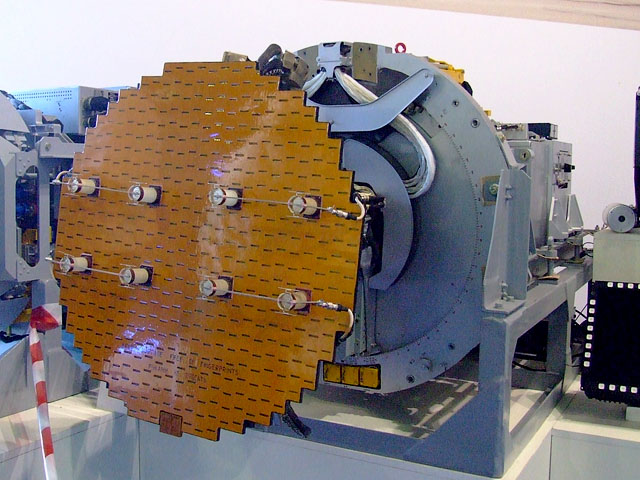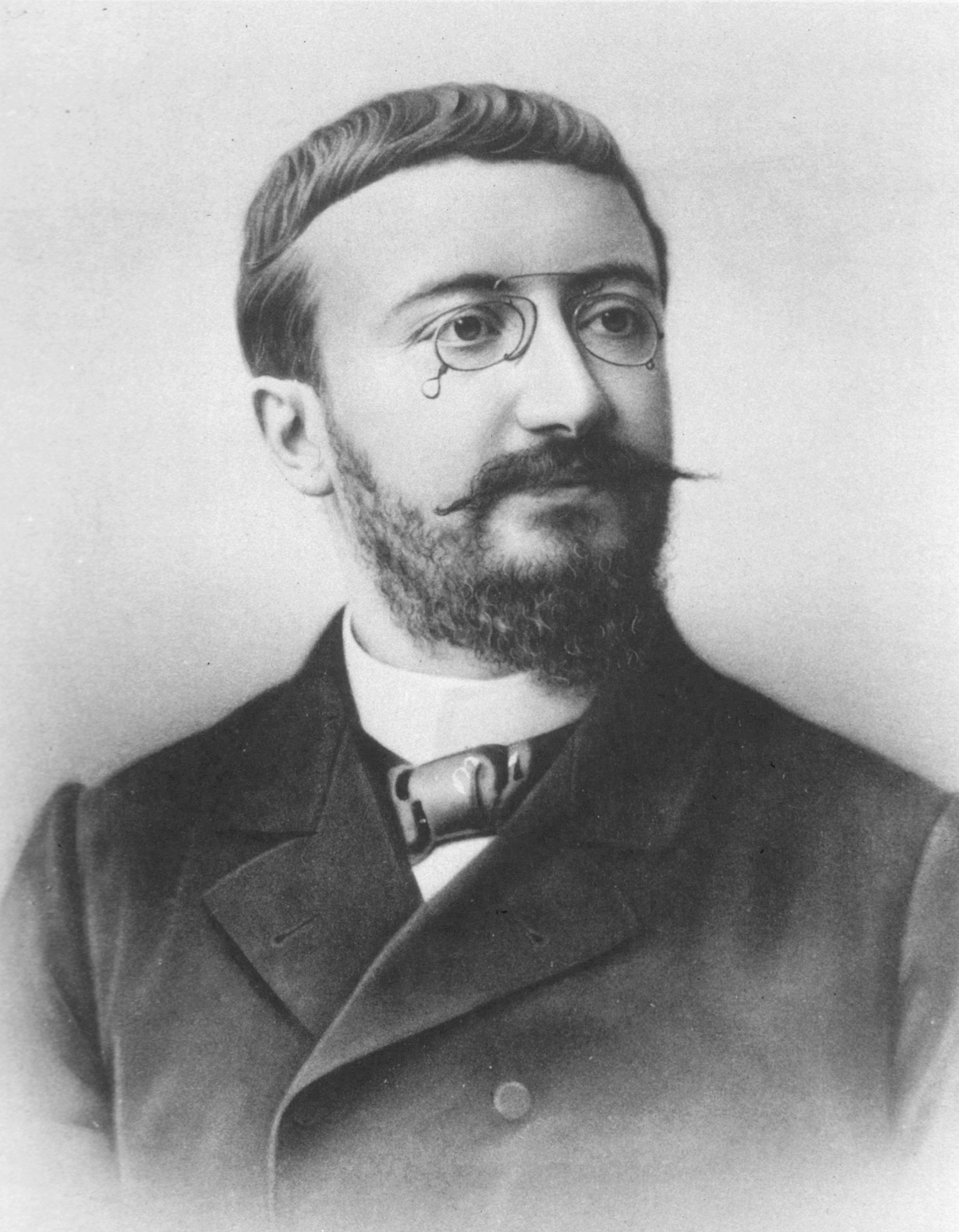|
Moving Target Indication
Moving target indication (MTI) is a mode of operation of a radar to discriminate a target against the clutter. It describes a variety of techniques used for finding moving objects, like an aircraft, and filter out unmoving ones, like hills or trees. It contrasts with the modern stationary target indication (STI) technique, which uses details of the signal to directly determine the mechanical properties of the reflecting objects and thereby find targets whether they are moving or not. Early MTI systems generally used an acoustic delay line to store a single pulse of the received signal for exactly the time between broadcasts (the pulse repetition frequency). This stored pulse will be sent to the display along with the next received pulse. The result was that the signal from any objects that did not move mixed with the stored signal and became muted out. Only signals that changed, because they moved, remained on the display. These were subject to a wide variety of noise effects that m ... [...More Info...] [...Related Items...] OR: [Wikipedia] [Google] [Baidu] |
Radar
Radar is a detection system that uses radio waves to determine the distance (''ranging''), angle, and radial velocity of objects relative to the site. It can be used to detect aircraft, ships, spacecraft, guided missiles, motor vehicles, weather formations, and terrain. A radar system consists of a transmitter producing electromagnetic waves in the radio or microwaves domain, a transmitting antenna, a receiving antenna (often the same antenna is used for transmitting and receiving) and a receiver and processor to determine properties of the objects. Radio waves (pulsed or continuous) from the transmitter reflect off the objects and return to the receiver, giving information about the objects' locations and speeds. Radar was developed secretly for military use by several countries in the period before and during World War II. A key development was the cavity magnetron in the United Kingdom, which allowed the creation of relatively small systems with sub-meter resolution. Th ... [...More Info...] [...Related Items...] OR: [Wikipedia] [Google] [Baidu] |
Interference (wave Propagation)
In physics, interference is a phenomenon in which two waves combine by adding their displacement together at every single point in space and time, to form a resultant wave of greater, lower, or the same amplitude. Constructive and destructive interference result from the interaction of waves that are correlated or coherent with each other, either because they come from the same source or because they have the same or nearly the same frequency. Interference effects can be observed with all types of waves, for example, light, radio, acoustic, surface water waves, gravity waves, or matter waves. Etymology The word ''interference'' is derived from the Latin words ''inter'' which means "between" and ''fere'' which means "hit or strike", and was coined by Thomas Young in 1801. Mechanisms The principle of superposition of waves states that when two or more propagating waves of the same type are incident on the same point, the resultant amplitude at that point is equal to th ... [...More Info...] [...Related Items...] OR: [Wikipedia] [Google] [Baidu] |
Radar Signal Processing
Radar is a detection system that uses radio waves to determine the distance (''ranging''), angle, and radial velocity of objects relative to the site. It can be used to detect aircraft, ships, spacecraft, guided missiles, motor vehicles, weather formations, and terrain. A radar system consists of a transmitter producing electromagnetic waves in the radio or microwaves domain, a transmitting antenna, a receiving antenna (often the same antenna is used for transmitting and receiving) and a receiver and processor to determine properties of the objects. Radio waves (pulsed or continuous) from the transmitter reflect off the objects and return to the receiver, giving information about the objects' locations and speeds. Radar was developed secretly for military use by several countries in the period before and during World War II. A key development was the cavity magnetron in the United Kingdom, which allowed the creation of relatively small systems with sub-meter resolution. The t ... [...More Info...] [...Related Items...] OR: [Wikipedia] [Google] [Baidu] |
Pulse-Doppler Radar
A pulse-Doppler radar is a radar system that determines the range to a target using pulse-timing techniques, and uses the Doppler effect of the returned signal to determine the target object's velocity. It combines the features of pulse radars and continuous-wave radars, which were formerly separate due to the complexity of the electronics. The first operational Pulse Doppler radar was in the CIM-10 Bomarc, an American long range supersonic missile powered by ramjet engines, and which was armed with a W40 nuclear weapon to destroy entire formations of attacking enemy aircraft. Pulse-Doppler systems were first widely used on fighter aircraft starting in the 1960s. Earlier radars had used pulse-timing in order to determine range and the angle of the antenna (or similar means) to determine the bearing. However, this only worked when the radar antenna was not pointed down; in that case the reflection off the ground overwhelmed any returns from other objects. As the ground moves at the ... [...More Info...] [...Related Items...] OR: [Wikipedia] [Google] [Baidu] |
Doppler Radar
A Doppler radar is a specialized radar that uses the Doppler effect to produce velocity data about objects at a distance. It does this by bouncing a microwave signal off a desired target and analyzing how the object's motion has altered the frequency of the returned signal. This variation gives direct and highly accurate measurements of the radial component of a target's velocity relative to the radar. Concept Doppler effect The Doppler effect (or Doppler shift), named after Austrian physicist Christian Doppler who proposed it in 1842, is the difference between the observed frequency and the emitted frequency of a wave for an observer moving relative to the source of the waves. It is commonly heard when a vehicle sounding a siren approaches, passes and recedes from an observer. The received frequency is higher (compared to the emitted frequency) during the approach, it is identical at the instant of passing by, and it is lower during the recession. This variation of f ... [...More Info...] [...Related Items...] OR: [Wikipedia] [Google] [Baidu] |
Pulse-Doppler Signal Processing
Pulse-Doppler signal processing is a radar and CEUS performance enhancement strategy that allows small high-speed objects to be detected in close proximity to large slow moving objects. Detection improvements on the order of 1,000,000:1 are common. Small fast moving objects can be identified close to terrain, near the sea surface, and inside storms. This signal processing strategy is used in pulse-Doppler radar and multi-mode radar, which can then be pointed into regions containing a large number of slow-moving reflectors without overwhelming computer software and operators. Other signal processing strategies, like moving target indication, are more appropriate for benign clear blue sky environments. It is also used to measure blood flow in Doppler ultrasonography. Environment Pulse-Doppler begins with coherent pulses transmitted through an antenna or transducer. There is no modulation on the transmit pulse. Each pulse is a perfectly clean slice of a perfect coherent tone. Th ... [...More Info...] [...Related Items...] OR: [Wikipedia] [Google] [Baidu] |
Measure Of Performance
Performance measurement is the process of collecting, analyzing and/or reporting information regarding the performance of an individual, group, organization, system or component. Definitions of performance measurement tend to be predicated upon an assumption about why the performance is being measured. * Moullin defines the term with a forward looking organisational focus—"the process of evaluating how well organisations are managed and the value they deliver for customers and other stakeholders". * Neely et al. use a more operational retrospective focus—"the process of quantifying the efficiency and effectiveness of past actions". * In 2007 the Office of the Chief Information Officer in the USA defined it using a more evaluative focus—"Performance measurement estimates the parameters under which programs, investments, and acquisitions are reaching the targeted results". Beyond a simple agreement about it being linked to some kind of measurement of performance there is littl ... [...More Info...] [...Related Items...] OR: [Wikipedia] [Google] [Baidu] |
L Band
The L band is the Institute of Electrical and Electronics Engineers (IEEE) designation for the range of frequencies in the radio spectrum from 1 to 2 gigahertz (GHz). This is at the top end of the ultra high frequency (UHF) band, at the lower end of the microwave range. Applications Mobile service In Europe, the Electronic Communications Committee (ECC) of the European Conference of Postal and Telecommunications Administrations (CEPT) has harmonized part of the L band (1452–1492 MHz), allowing individual countries to adopt this spectrum for terrestrial mobile/fixed communications networks supplemental downlink (MFCN SDL). By means of carrier aggregation, an LTE-Advanced or UMTS/HSDPA base station could use this spectrum to provide additional bandwidth for communications from the base station to the mobile device; i.e., in the downlink direction. In the Americas, mobile services are operated between the 1.7 GHz to 2.1 GHz range in the PCS and AWS bands. ... [...More Info...] [...Related Items...] OR: [Wikipedia] [Google] [Baidu] |
Jitter
In electronics and telecommunications, jitter is the deviation from true periodicity of a presumably periodic signal, often in relation to a reference clock signal. In clock recovery applications it is called timing jitter. Jitter is a significant, and usually undesired, factor in the design of almost all communications links. Jitter can be quantified in the same terms as all time-varying signals, e.g., root mean square (RMS), or peak-to-peak displacement. Also, like other time-varying signals, jitter can be expressed in terms of spectral density. Jitter period is the interval between two times of maximum effect (or minimum effect) of a signal characteristic that varies regularly with time. Jitter frequency, the more commonly quoted figure, is its inverse. ITU-T G.810 classifies jitter frequencies below 10 Hz as wander and frequencies at or above 10 Hz as jitter. Jitter may be caused by electromagnetic interference and crosstalk with carriers of other signals. Jitte ... [...More Info...] [...Related Items...] OR: [Wikipedia] [Google] [Baidu] |
Crossed-field Amplifier
A crossed-field amplifier (CFA) is a specialized vacuum tube, first introduced in the mid-1950s and frequently used as a microwave amplifier in very-high-power transmitters. Raytheon engineer William C. Brown's work to adapt magnetron principles to create a new broadband amplifier is generally recognized as the first CFA, which he called an Amplitron. Other names that are sometimes used by CFA manufacturers include Platinotron or Stabilotron. A CFA has lower gain and bandwidth than other microwave amplifier tubes (such as klystrons or traveling-wave tubes); but it is more efficient and capable of much higher output power. Peak output powers of many megawatts and average power levels of tens of kilowatts can be achieved, with efficiency ratings over 70 percent. Their current use is in satellite ground stations and deep space communications networks. Operation A CFA's electric and magnetic fields are perpendicular to each other ("crossed fields"). This is the same type of fie ... [...More Info...] [...Related Items...] OR: [Wikipedia] [Google] [Baidu] |
Iq Samples
An intelligence quotient (IQ) is a total score derived from a set of standardized tests or subtests designed to assess human intelligence. The abbreviation "IQ" was coined by the psychologist William Stern for the German term ''Intelligenzquotient'', his term for a scoring method for intelligence tests at University of Breslau he advocated in a 1912 book. Historically, IQ was a score obtained by dividing a person's mental age score, obtained by administering an intelligence test, by the person's chronological age, both expressed in terms of years and months. The resulting fraction (quotient) was multiplied by 100 to obtain the IQ score. For modern IQ tests, the raw score is transformed to a normal distribution with mean 100 and standard deviation 15. This results in approximately two-thirds of the population scoring between IQ 85 and IQ 115 and about 2.5 percent each above 130 and below 70. Scores from intelligence tests are estimates of intelligence. Unlike, for example, d ... [...More Info...] [...Related Items...] OR: [Wikipedia] [Google] [Baidu] |







